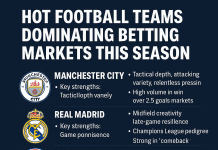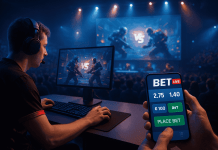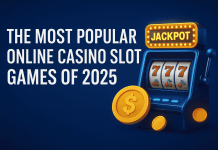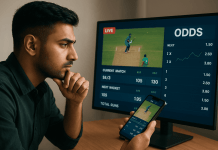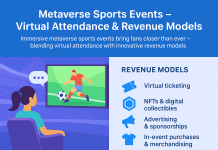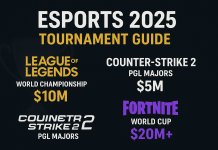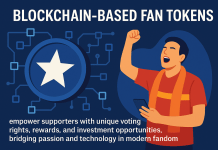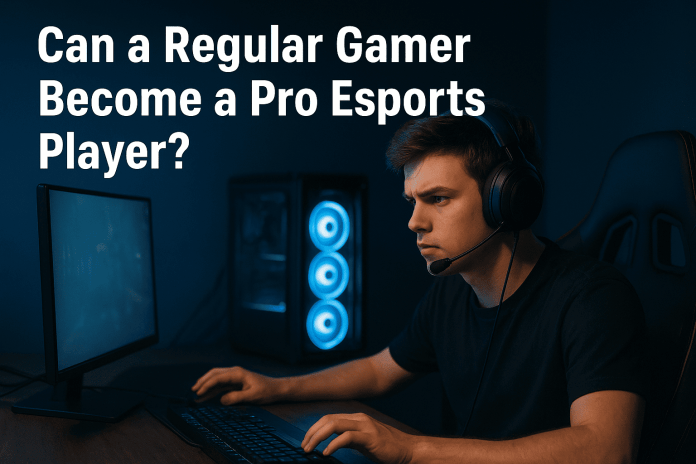
Can a Regular Gamer Become a Pro Esports Player?
The proven path from casual gaming to professional esports. Learn the mindset, skills, and strategies needed to transform your passion into a career.
The Dream of Going Pro
The esports industry is booming, with millions watching tournaments and thousands competing for life-changing prize pools. For many, the question is simple yet powerful: Can a regular gamer become a pro esports player?
The answer is a resounding yes—but the journey requires more than just skill. It demands discipline, strategy, networking, and an unwavering mindset. This guide, crafted with insights from industry veterans and esports coaches, will walk you through how to turn your gaming passion into a professional pursuit.
The Truth About Going Pro in Esports
A professional esports player isn’t just a talented gamer—they are a dedicated competitor who has mastered the game’s mechanics, honed their mental resilience, and committed to consistent improvement.
The beauty of esports is its accessibility. Unlike traditional sports, there are no age, height, or physical barriers preventing you from competing. Your mouse, keyboard, or controller is the great equalizer.
Step 1 – Master One Game
If you want to go pro, focus is your best friend. Playing multiple games casually will not prepare you for professional play. Instead:
- Pick one competitive title (League of Legends, Valorant, CS2, Dota 2, Fortnite, etc.).
- Learn every mechanic, map, and strategy.
- Follow updates and patch notes to stay competitive.
- Study pro players in your game and analyze their playstyles.
Pro Tip: Many esports athletes recommend logging at least 1,000 hours of focused practice in one title before even attempting high-level competitions.
Step 2 – Develop a Structured Practice Routine
Talent gets you noticed; consistency makes you great. A structured training plan should include:
- Aim training (FPS games) or mechanics drills (MOBA/Fighting games).
- Studying replays to identify mistakes.
- Practicing with and against players better than you.
- Participating in scrims and community tournaments.
Example Routine:
- 1 hour aim/mechanics training
- 2 hours ranked matches
- 1 hour replay review
- 1 hour scrims with teammates
Step 3 – Build Your Mental Game
Esports is as much about mental strength as it is about mechanics. A single mistake can cost a match—and how you handle it matters.
- Learn emotional control under pressure.
- Practice focus and concentration for long matches.
- Develop a growth mindset—view losses as lessons.
Step 4 – Get the Right Gear
While skill outweighs hardware, optimized gear can give you an edge:
- High-refresh-rate monitor (144Hz or higher)
- Low-latency mouse or controller
- Mechanical keyboard
- Quality headset for precise audio cues
- Reliable internet with low ping
Step 5 – Join a Community and Network
No one makes it alone. The esports world thrives on connections.
- Join Discord servers dedicated to your game.
- Participate in online tournaments.
- Collaborate with streamers and content creators.
- Attend esports events to meet players and coaches.
Step 6 – Compete in Amateur and Semi-Pro Tournaments
Before you’re a pro, you’re a competitor in the making. Look for:
- Local or online tournaments (ESL, FACEIT, Battlefy)
- Ladder competitions
- School or university esports programs
Winning isn’t the only goal—exposure, experience, and improvement matter just as much.
Step 7 – Build Your Brand
In modern esports, visibility is currency. Many pros were discovered because they streamed or shared their gameplay.
- Create a Twitch or YouTube channel.
- Share highlights and tips on social media.
- Maintain a positive, professional online presence.
Step 8 – Learn From the Pros
Study professional matches not as a fan, but as a student of the game.
- Watch official tournament broadcasts.
- Analyze decision-making in high-pressure situations.
- Follow pro players’ streams to understand their thought processes.
Step 9 – Commit to Long-Term Growth
Going pro rarely happens overnight. Many professionals spent years in semi-pro circuits before breaking into the big leagues.
Persistence is the deciding factor between those who make it and those who quit too soon.
The Reality Check – What It Takes
While the dream is achievable, it comes with realities:
- Competition is fierce—millions of gamers aim for the same spots.
- Time investment is huge—expect 5-8 hours of practice daily.
- Sacrifices are required—social life, free time, and other hobbies may take a back seat.
If you can embrace this challenge, you already have the mindset of a pro.
Conclusion – Your Pro Journey Starts Now
So, can a regular gamer become a pro esports player? Absolutely. The path is clear:
- Pick your game.
- Train with discipline.
- Compete, learn, and network.
- Stay consistent and patient.
If you’re willing to put in the work, your dream is within reach.
Frequently Asked Questions
Q1: How long does it take to become a pro esports player?
It varies, but most players train for 2–5 years before going pro.
Q2: Do I need expensive gear to go pro?
No. Good gear helps, but skill and dedication matter far more.
Q3: Can I go pro if I’m older than most players?
Yes, while reaction times may decline slightly, strategy, teamwork, and game sense can keep you competitive.
Q4: Do all pro players make a living from esports?
Not always. Many supplement income through streaming, sponsorships, or content creation.
Q5: Is esports a stable career?
It’s competitive and evolving, but with the right skills, branding, and adaptability, it can be a rewarding career path.
